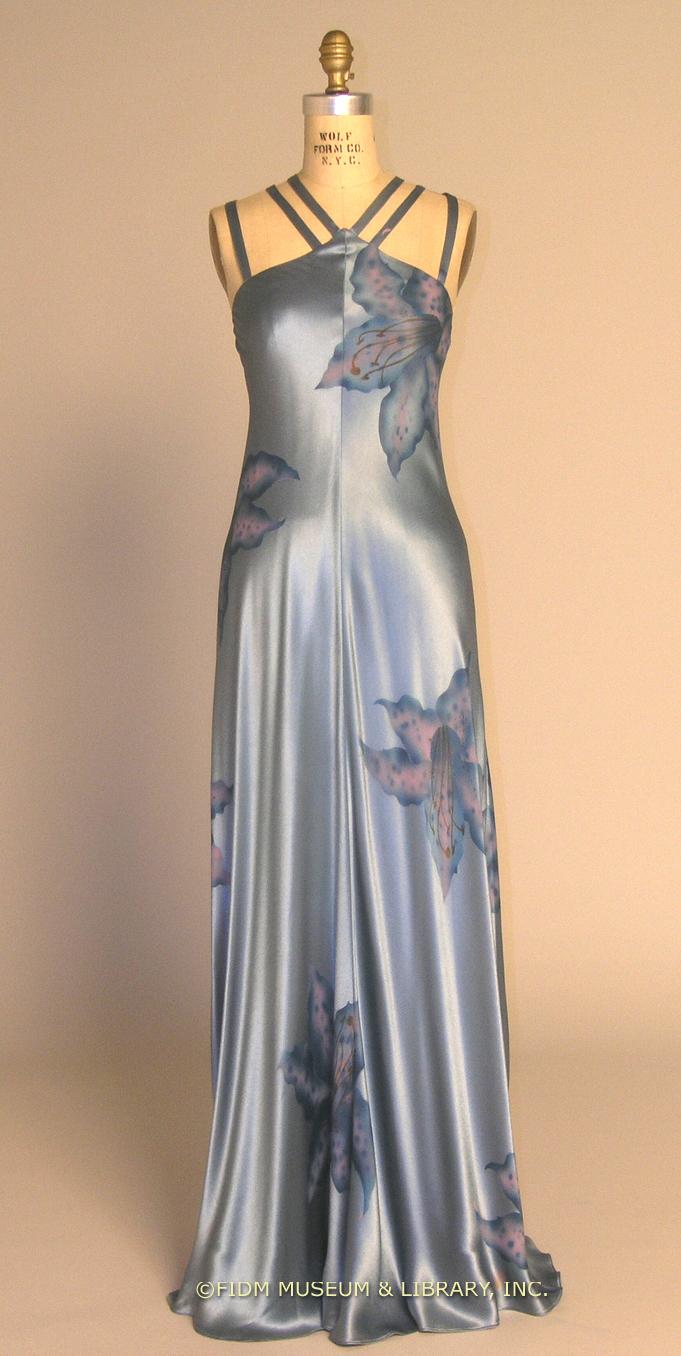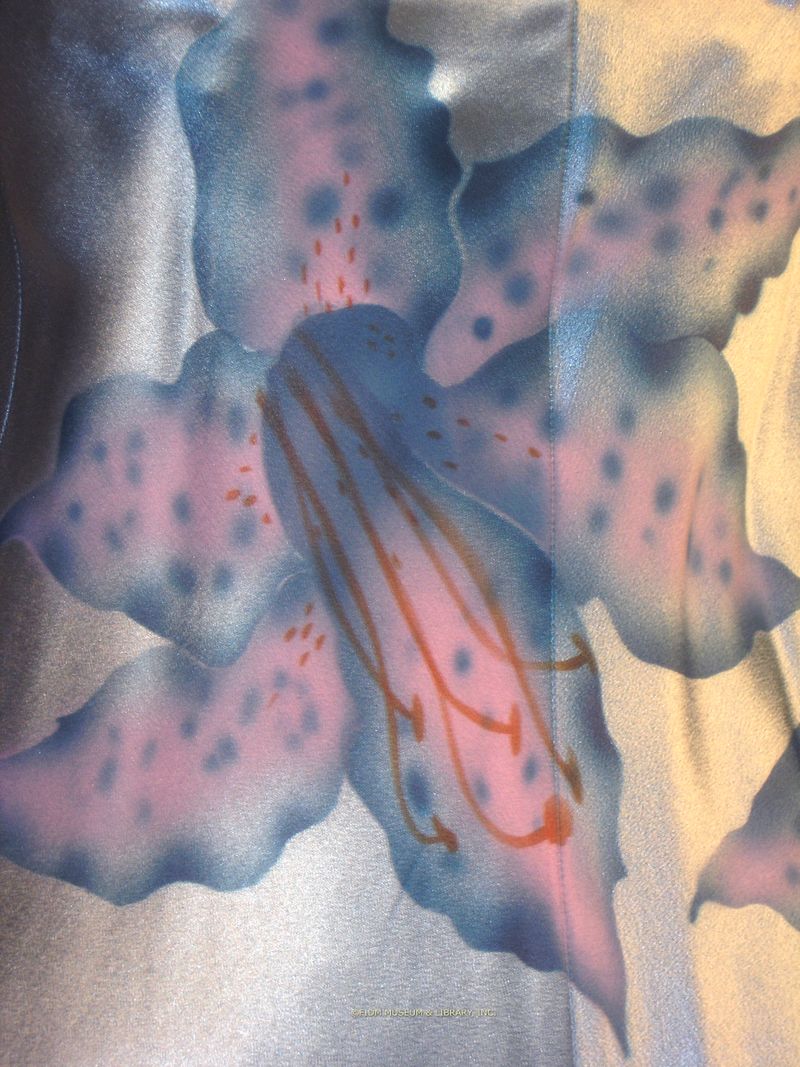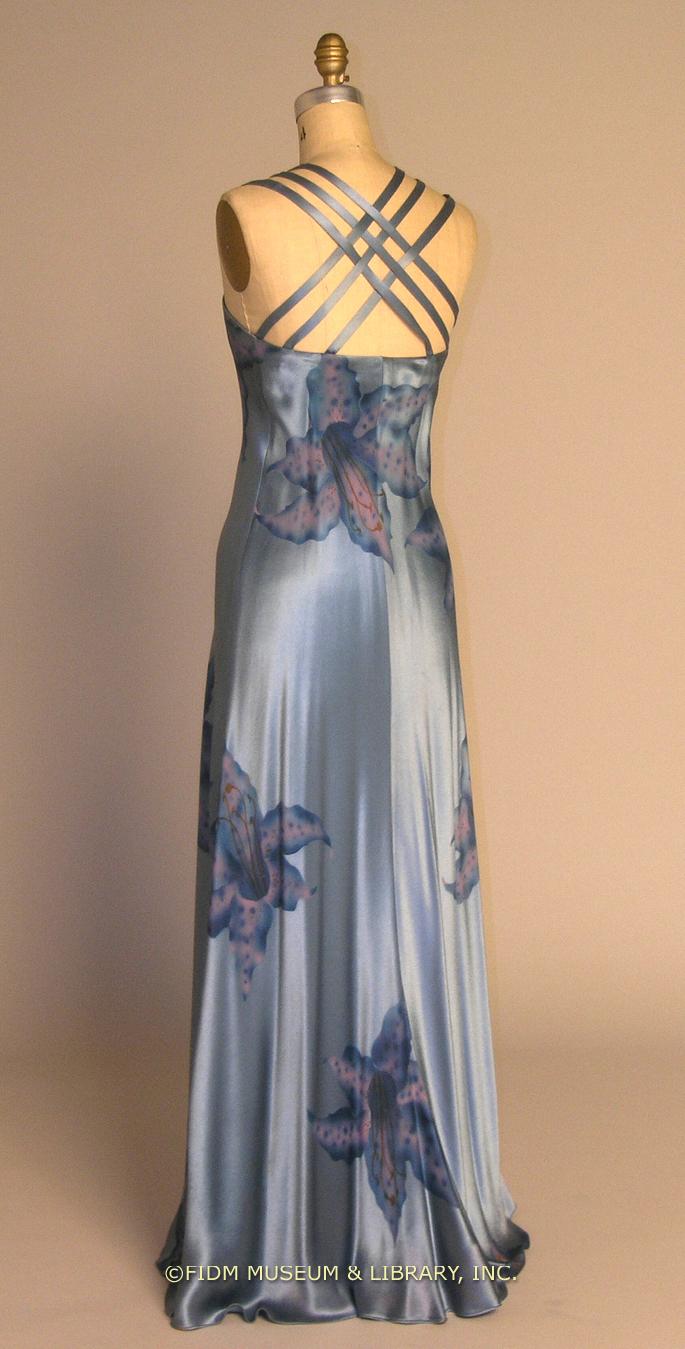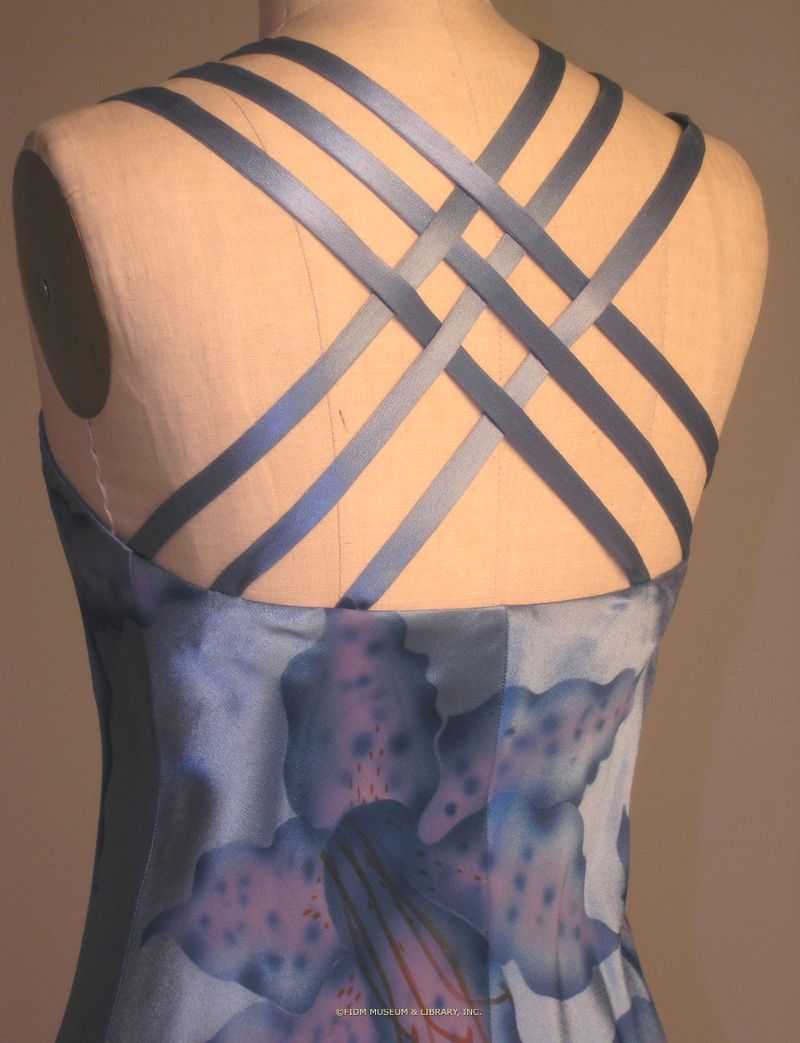Holly's Harp
Los Angeles-based designer Holly Harp (1939-1995) began her fashion career in the late 1960s, designing theatrical, psychedelic clothing for iconic performers such as Janis Joplin and Grace Slick of Jefferson Airplane. Harp's early designs were in tune with the catch-all aesthetic of late 1960s hippie fashions, and her garments quickly gained a reputation for "being wild and wonderful, feathers and fringe."1 A maxi-dress worn by the singer-songwriter Dory Previn was typical of Harp's aesthetic. Constructed of an old table cloth, green doily and a piece of vintage satin, it was described as a "clothing mosaic."2 In 1968, Harp opened Holly's Harp, a small boutique on the Sunset Strip where she sold both her ready-made and custom-designed garments.
Within a few years, Harp's designs had taken on a very different character. Instead of merely incorporating bits and pieces of the past by using vintage textiles, Harp started designing slinky, overtly sexy dresses and separates that referenced the glamour of Old Hollywood. Using silk textiles such as jersey, crepe and chiffon, Harp created what she called " fantasy-oriented...mood clothes."3 These mood clothes often referenced 1930s evening wear, as in the Holly's Harp bias-cut dress seen here.

Evening dress
Holly's Harp
c. 1978
Gift of Gloria Strasburger
99.655.3
Harp often recruited local artists and craftspeople to hand-paint or airbrush designs on completed garments. These designs usually took the form of floral motifs, such as the iris (or lily?) seen in the FIDM Museum dress.
In interviews, Harp was always very open about the fact that she designed for a very specific segment of the population. She felt that her strength lay in designing "special clothes for special people," many of whom were Hollywood stars such as Liza Minelli, Diana Ross, Ali McGraw and Sally Field.4 Harp was also very clear that she designed for a specific body type, stating that "you just can't put lumpy bodies in my clothes." 5 During print interviews, however, Harp regularly encouraged women to feel good about their specific body type. Harp's somewhat contradictory views accurately pinpoint the tension between ideal and real that is always present in fashion.
Harp maintained her "sexy not solicitous" aesthetic throughout the 1970s and into the 1980s. Throughout this period, Holly's Harp retailed both through the eponymous boutique and at major retailers on both the East and West coasts. Though her line remained popular, it moved further and further away from mainstream fashion, which emphasized a more masculine, power-oriented aesthetic for women. In 1986, Harp closed her boutique, though she continued to produce private commissions from her studio until her death in 1995.
1 Krier, Beth Ann. "Subtlety Newest Boutique Commodity." Los Angeles Times 27 April 1972: 11.
2 Krier, Beth Ann. "Hiding a Naked Lady." Los Angeles Times 6 June 1971: W20.
3 "No Lumpen Proletariat for Designer Holly Harp." Los Angeles Times 4 Sept. 1975: G2.
4 Luther, Marylou. "Shuck Perfection, Slink Into Real." Los Angeles Times 25 Jan. 1976: D1.
5 Ibid.


